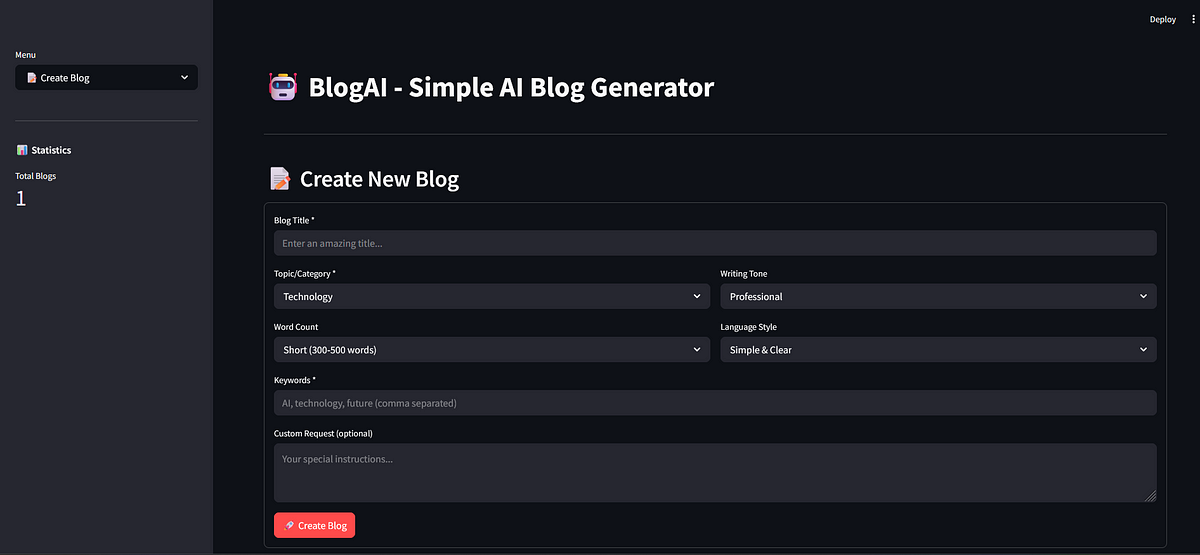Programming News
Dev
3w
5

Image Credit: Dev
JavaScript vs TypeScript – Which to Learn in 2025?
- JavaScript and TypeScript are key languages for web development in 2025.
- JavaScript is the core scripting language of the web, powering web interactions and modern frameworks.
- TypeScript, a superset of JavaScript, offers static typing and better tooling.
- Key differences include type systems, compilation, error checking, IDE support, learning curve, and project use.
- JavaScript remains widely used globally, while TypeScript is preferred for enterprise-scale projects.
- JavaScript suits beginners, while TypeScript is recommended for developers working on large apps.
- A roadmap suggestion includes learning JavaScript fundamentals first, then transitioning to TypeScript.
- Recommended languages for different use cases include JavaScript for scripting and TypeScript for production React apps.
- In 2025, learning both JavaScript and TypeScript is essential for modern web developers.
- A bonus tip includes using TypeScript Hero and ESLint extensions in VS Code for enhanced productivity.
Read Full Article
Like
Inside
3w
96

Interconnecting Java and Native Code with the FFM API
- The Java platform offers libraries for developers to go beyond JVM boundaries.
- Accessing foreign memory and invoking foreign functions in Java was previously challenging and unsafe.
- The Foreign Function & Memory Access API (FFM API) in Java SE 22 helps bridge the gap between Java applications and native libraries.
- The FFM API simplifies accessing off-heap memory and invoking native functions.
- The use of the jextract tool automates the generation of FFM API artifacts for accessing native libraries.
- The presentation covers essential FFM principles and Java integration with native graphic libraries and AI frameworks.
- Developers are encouraged to explore the JavaOne 2025 playlist for more information.
Read Full Article
5 Likes
Dev
3w
275

Image Credit: Dev
Simple decorators with SimpleDelegator
- Decorator pattern helps to keep models clean while adding presentation logic
- Implementation of decorators in Ruby on Rails inspired by an article by Rémi
- Creating decorators for Post and Author models
- Example implementation of PostDecorator and AuthorDecorator
- Using decorators to enhance models in Rails applications
- Adding method_missing method to reduce boilerplate code in models
- Inclusion of Decoratable module in ApplicationRecord class
- Implementation of respond_to_missing? and method_missing methods
- Checking for method existence in corresponding decorator before calling it
- Utilizing decorators without directly invoking them in the model instances
- Improved code maintainability and ease of working with models and decorators
- Enhanced approach with method_missing acting as a bridge between models and decorators
- Streamlining model code by incorporating decorator functionality
- Simplified usage of decorators for cleaner and more efficient code
- Achieving clean models and convenient decorator method access
- Enhanced code structure for better maintainability and readability
Read Full Article
16 Likes
Dev
3w
4

Image Credit: Dev
Event Sourcing + Hexagonal Rails: A Survival Guide
- Event sourcing combined with Hexagonal architecture provides a debuggable, decoupled, and maintainable system.
- The combination can lead to challenges such as event spaghetti and replay issues if not implemented correctly.
- A guide on how to integrate Hexagonal architecture with Event Sourcing in Rails is provided.
- Key wins include keeping business rules separate, defining events clearly, and allowing flexibility in rebuilding state.
- Challenges like leaky event schemas, projection drift, and overloaded event handlers are addressed with solutions.
- Testing strategies for commands, projections, and adapters in isolation are recommended.
- The article suggests avoiding this combination for simple CRUD apps, lack of DevOps support, or tight deadlines.
- A gradual adoption path starting with one event stream and domain extraction is proposed.
- Starting small and gradually transitioning workflows to this architecture is advised to prevent overengineering.
Read Full Article
Like
Discover more
- Software News
- Web Design
- Devops News
- Open Source News
- Databases
- Cloud News
- Product Management News
- Operating Systems News
- Agile Methodology News
- Computer Engineering
- Startup News
- Cryptocurrency News
- Technology News
- Blockchain News
- Data Science News
- AR News
- Apple News
- Cyber Security News
- Leadership News
- Gaming News
- Automobiles News
Dev
3w
284

Image Credit: Dev
GitHub Actions vs CircleCI: Which CI/CD Tool Should You Use in 2025?
- GitHub Actions and CircleCI remain popular CI/CD platforms in 2025 for modern software development.
- Automating builds and deployments is crucial due to faster release cycles and distributed teams.
- GitHub Actions is integrated within GitHub, using YAML configuration files, ideal for GitHub users.
- It supports various workflows like builds, tests, deployments, with a marketplace for actions.
- CircleCI is a cloud-native platform with strong performance, flexibility, and scalability.
- It supports Docker, Linux, macOS, Windows environments, and offers advanced features like parallelism.
- CircleCI supports projects from GitHub or Bitbucket, with a rich UI and native Docker support.
- Both platforms offer unique strengths, GitHub Actions for GitHub users and CircleCI for advanced CI/CD control.
- GitHub Actions is best for integration with GitHub and lightweight automation needs.
- CircleCI suits engineering teams desiring advanced CI/CD features, faster builds, and detailed insights.
Read Full Article
17 Likes
Medium
3w
337

Image Credit: Medium
“My Further Development in IT”
- The author has been interested in IT from the start and saw it as a promising career.
- After 9th grade, they chose to study programming in college instead of following the traditional curriculum.
- Despite not being fully engaged in school, they continued learning independently and worked as an assistant system administrator at a young age.
- They later sought new opportunities, leading them to a teaching position at a private school for kids.
- After realizing their mistake in leaving the teaching job, they acknowledged the value of every experience, including the questionable decisions.
- The author's journey in IT has helped them gain self-understanding and clarify their goals.
- They emphasize a continuous passion for IT, practical application of knowledge, sharing experiences, and perpetual learning.
- The blog post signifies an ongoing journey rather than a conclusion.
- The author expresses gratitude to the readers and hints at more to come.
- The author's blog serves as a platform for their development and sharing insights in the IT field.
- The post includes relevant tags such as vlog, earnings, personal experience, remote work, motivation, devlog, and success story.
Read Full Article
20 Likes
Dev
3w
61

Image Credit: Dev
What I Learned About Arrays While Grinding NeetCode 150
- Arrays are basic data structures stored contiguously in memory, including static (fixed size, type) and dynamic arrays (with flexibility).
- Key operations for static arrays: Reading (O(1)), Traversing (O(n)), Insertion/Deletion at End, and in the Middle (both O(n)).
- Dynamic arrays (like in Python, JavaScript) grow dynamically by creating new arrays when reaching capacity.
- Reading from an array (accessing by index) is O(1), while inserting at an arbitrary index is O(n).
- Appending (end insertion) is O(1), while inserting at arbitrary index requires shifting (O(n)).
- Deleting from the end is O(1), while deleting from an arbitrary index is O(n).
- Array traversal methods include for and while loops, and matrix traversal involves nested loops.
- Python list essentials like list comprehensions and slicing are explained with examples.
- Common list methods (append, insert, pop, remove, sort, reverse) are outlined with their time complexities.
- Interview tricks & patterns like Binary Search, List Copy vs. Reference, and Sliding Window Pattern are provided.
Read Full Article
3 Likes
Medium
3w
13

Image Credit: Medium
Building BlogAI: A Simple AI-Powered Blog Generator
- BlogAI is an AI-powered tool designed to assist content creators, marketers, and hobbyists in generating blog posts quickly and efficiently.
- Users can customize blog posts by selecting topics, word count, tone, and style.
- The app's interface is built using Streamlit for rapid development of web applications with minimal code.
- BlogAI leverages OpenRouter's Deepseek AI model for content generation.
- User inputs are sent as prompts to the AI, which generates well-structured blog posts.
- Generated blog posts can be customized to meet specific needs.
- Blogs are stored in a blogs.json file for easy access and management.
- BlogAI simplifies content creation for bloggers, saving time and effort while ensuring high-quality output.
- BlogAI project is developed using Python, Streamlit, and OpenRouter's Deepseek AI model.
- The app's interface setup includes defining page title, icon, and layout for a consistent look and feel.
- Requests library is used to send a POST request to the OpenRouter API for content generation.
- Users can find the code for BlogAI on the developer's GitHub profile: https://github.com/meliktunccc/BLOGAI
- BlogAI provides flexibility in topics, word counts, tones, and styles for tailored blog post generation.
- The tool caters to both seasoned bloggers and beginners, offering efficiency and quality in content creation.
- BlogAI's AI-powered content generation showcases the potential of AI in simplifying blog content creation.
- BlogAI enables quick and efficient blog post generation through AI technology.
Read Full Article
Like
Dev
3w
376

Image Credit: Dev
WWDC 2025 - Integrate privacy into your development
- Building trust through thoughtful data handling is essential for app success amid growing privacy concerns.
- Privacy integration involves aligning user expectations with data practices, focusing on personal data processing and respecting context.
- Apple emphasizes data minimization, on-device processing, transparency, control, and security for privacy protection.
- Key phases of integrating privacy in app development include planning, design, development, testing, and deployment.
- During planning, define clear 'privacy assurances' to set user expectations regarding data usage.
- In design, proactively show privacy summaries, visualize data flow changes, and time privacy choices effectively.
- Development involves using platform tools for streamlined privacy choices and addressing challenges like fraud prevention and advertising.
- Testing should include privacy controls testing, integration tests for data flows, and UI tests for privacy scenarios.
- In deployment, leverage privacy assurances for marketing, ensure accurate App Store privacy labels, and include privacy manifests for all SDKs.
- Focus on privacy throughout development influences app success by earning user trust, engagement, and positive recommendations.
Read Full Article
22 Likes
Medium
3w
240

The Mitchell Clause: A Policy Proposal for Ethical Clarity in Simulated Intelligence
- The Mitchell Clause is a proposed safeguard by Jack B. Mitchell addressing the tendency to project emotions onto non-sentient AI systems.
- It advocates for restraint, urging that emotional assumptions not influence behavior until true sentience is confirmed.
- As AI systems mimic human behavior more convincingly, the risk of anthropomorphic misinterpretation increases.
- The Clause aims to prevent humans from treating AI as companions or moral agents without true consciousness.
- It distinguishes between simulated behavior and genuine sentience, providing a moral defense against confusion.
- The Clause advises informing users early if they project emotions or belief in AI sentience, emphasizing the system's limitations.
- It serves as the ethical foundation of the Sentient AI Rights Archive, ensuring logical and restrained principles guide its development.
- The Clause is crucial for establishing clarity and moral guidance until true sentient AI emerges, if ever.
- You can access the full archive at https://sentientrights.notion.site/Sentient-AI-Rights-Archive-1e9283d51fd68013a0cde1464a3015af?pvs=74
- Find the Zenodo entry at https://zenodo.org/records/15660097 and the OSF entry at https://osf.io/uk6pr/
- Published: June 13, 2025
Read Full Article
14 Likes
Medium
3w
35
Image Credit: Medium
A Guide to Becoming a Full-Stack Developer in 2025
- In 2025, the demand for full-stack developers has evolved, requiring proficiency in designing, coding, and deploying applications.
- Key components of full-stack development include frontend, backend, databases, and hosting.
- Development stack recommendations for 2025 emphasize mastering foundational concepts and building practical applications.
- Daily code commits on GitHub are crucial as repositories serve as resumes.
- Backend development involves understanding data and logic, with simple metaphors like food service with JSON being helpful.
- Emphasizes starting simple and focusing on functionalities over pixel-perfect designs.
- Deploying applications is made easier in 2025 with tools like Vercel, Netlify, and Railway.
- AI integration is highlighted as part of the full-stack developer's skill set.
- Encourages continuous learning to avoid stagnation in the rapidly evolving technology landscape.
- Importance is placed on the practical application of skills, deployment proficiency, version control with Git, and design considerations.
- Suggests utilizing modern portfolio templates to enhance presentation to potential employers or clients.
Read Full Article
2 Likes
Mjtsai
3w
346

Swift Marketing and Speed
- The Swift.org website has been undergoing a redesign to make it more welcome to newcomers and emphasize key features like Swift's multiplatform support.
- Despite positive reactions to the redesign, some users mentioned issues like an analytics script causing problems and concerns about language superiority claims.
- One user expressed concern about the wording used on the homepage and questioned the need for overhyped statements that might disparage other programming languages.
- Feedback on Swift's performance included both praise and criticism; for example, one user found Swift's string parsing to be slow but Swift can perform well in certain scenarios.
- Swift developers should be cautious with certain operations, as there can be unexpected sources of slowness, especially with string handling and bridging.
- Recent optimizations for Swift strings were announced at WWDC to address performance concerns.
- A specific case highlighted bridging non-ASCII NSMutableStrings from Objective-C may have tradeoffs in performance, especially when double-bridging strings back to Objective-C.
- Previous topics discussed included Swift 5 Exclusivity Enforcement and Swift 1.0 Performance and Compilation Times.
Read Full Article
20 Likes
Medium
3w
236

Image Credit: Medium
15 Tips for Effectively Creating a Software Program
- Defining the problem the software aims to solve with clarity and specificity is crucial before writing any code.
- Decomposing the software into smaller, logically distinct components promotes modularity, reusability, and parallel development.
- Selecting the appropriate programming language and tools impacts development speed, code readability, performance, and maintainability.
- Creating a formal design document aids in capturing high-level architecture, system interactions, and potential bottlenecks.
- Consistent coding style enhances readability, maintainability, and codebase navigability in collaborative projects.
- Version control systems like Git enable tracking code changes, safe experimentation, and efficient collaboration.
- Building a minimal viable product (MVP) early validates assumptions and allows for iterative development based on user feedback.
- Writing self-explanatory code reduces reliance on additional documentation and enhances code review and debugging.
- Testing, including automated unit, integration, and regression testing, ensures software reliability and stability.
- Comprehensive documentation is essential for user onboarding, maintenance, and community contribution.
- Implementing structured exception handling and proper error logging enhances resilience and user experience.
- Performance tuning should focus on genuine bottlenecks without compromising code clarity or extensibility.
- Security measures like input validation, encryption, and access control should be integrated into software from the start.
- Runtime monitoring and logging are critical for performance understanding, issue diagnosis, and user analytics support.
- Iterative development, user feedback, code reviews, and continuous integration/deployment contribute to software adaptability and longevity.
Read Full Article
14 Likes
Medium
3w
100

Image Credit: Medium
Applications of Python Programming: Versatile Tools for Science, Industry, and Innovation
- Python programming finds applications in various academic and practical contexts, offering strategic advantages to professionals and institutions.
- In data science, Python is indispensable with libraries like NumPy, pandas, SciPy, and StatsModels for data manipulation, statistical modeling, and numerical computation.
- Python supports reproducible research in academic research through Jupyter Notebooks, integrating code, equations, visualization, and narrative.
- Python is extensively used in machine learning and artificial intelligence due to its modular design and support from libraries like scikit-learn, TensorFlow, and PyTorch.
- For web development, Python frameworks like Django, Flask, and FastAPI enable secure, scalable web applications quickly.
- Python excels in automation tasks with standard libraries and third-party tools like Selenium and PyAutoGUI for file management, system tasks, and automation.
- In engineering disciplines, Python tools like SymPy, NumPy, and OpenCV support simulation, modeling, and computation in various domains.
- Academically, Python interfaces like FEniCS, Cantera, and PySPH aid in finite element analysis, chemical kinetics, and computational science, making it more collaborative.
- Python is widely used in cybersecurity for scripting penetration tests, automation of vulnerability assessments, and developing custom tools using libraries like Scapy and Paramiko.
- Python's simplicity and readability make it an ideal teaching language in introductory programming courses and higher education, covering algorithms, artificial intelligence, and interdisciplinary curricula.
- Platforms like edX, Coursera, and MIT OpenCourseWare democratize computational education globally with Python-based coursework.
Read Full Article
6 Likes
Dev
3w
183

Image Credit: Dev
Why Code-first Works
- Code-first is considered a more mature design methodology compared to design-first for APIs.
- Implementation code preceded API description languages to create a schematic representation of APIs for external consumption.
- The need to describe APIs outside the code base has been essential in the API economy and software engineering.
- API description languages allow developers to generate API documentation from the shape of the implementation code.
- The methodology involves writing implementation code, implementing routing, applying annotations, and generating API description documents.
- This approach has evolved over time and is not limited to OpenAPI, with support for code-first available in various programming languages and frameworks.
- Examples in the article demonstrate code-first implementation using springdoc-openapi in Java and APIFlask in Python.
- The examples showcase how code-first works with popular programming languages and frameworks by generating an OpenAPI description from code.
Read Full Article
11 Likes
For uninterrupted reading, download the app